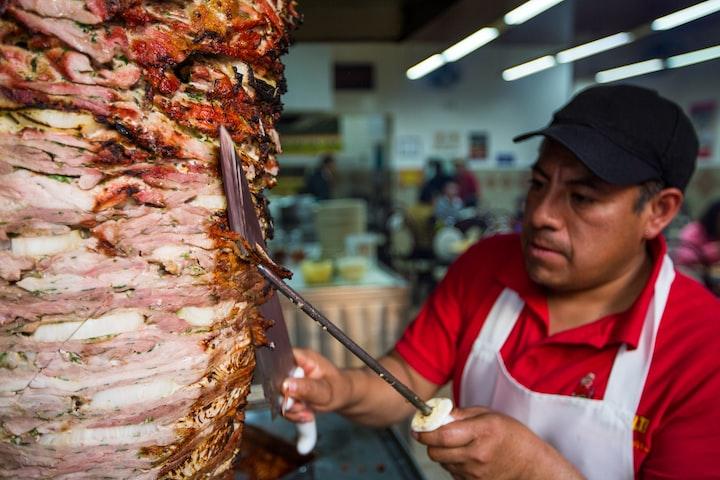The cleanest meat is any animal protein that has been raised without antibiotics or hormones and has not been exposed to contaminated water or feed. The term “clean meat” is not regulated by the USDA, but it is generally used to refer to poultry, pork, beef, and lamb that meet these criteria.
Factory farming practices have created an environment in which animals are routinely given antibiotics to prevent disease and hormones to promote growth. These drugs enter the food supply when we eat meat from these animals. In addition, animals raised for food are often kept in crowded and unsanitary conditions, which can lead to the spread of disease. Contaminated water and feed can also introduce harmful bacteria into the food supply.
Eating clean meat helps protect our health by reducing our exposure to antibiotics and hormones, as well as minimizing our risk of consuming contaminated food. It also supports the humane treatment of animals by ensuring they are raised in better conditions. When we choose clean meat, we vote with our dollars for a healthier food system for all.
Buffalo (Bison) No matter how good white meat can be, it will never truly satiate the craving for red meat
There is something about red meat that just hits the spot. It is rich, flavorful, and satisfying in a way that white meat can never be. And of all the red meats out there, buffalo (or bison) is the cleanest and healthiest option.
Buffalo are free-range animals that graze on grasses and other vegetation. They are not given any hormones or antibiotics, so you can be sure that their meat is free of any unwanted chemicals. Buffalo are also leaner than cattle, so their meat contains less fat and cholesterol.
In addition to being healthy and delicious, buffalo meat is also environmentally friendly. The animals have a low impact on the land they graze on, and their manure actually enriches the soil instead of damaging it like cattle manure does.
If you’re looking for a red meat option that is healthy, delicious, and environmentally friendly, look no further than buffalo!
Pork. Pork chops used to be on the doctors’ hit list
Pork chops used to be on the doctors’ hit list. They were loaded with fat and cholesterol and were thought to be a major contributor to heart disease. But things have changed.
Today, pork is a leaner, healthier meat than it was in the past. And while it is still higher in fat and cholesterol than chicken or fish, it can be part of a healthy diet if you choose the right cuts and cook them properly.
The first step is to choose lean cuts of pork, such as loin or tenderloin. These are the leanest and have the least amount of fat.
Next, you need to cook pork properly. Pork should be cooked until it reaches an internal temperature of 145 degrees Fahrenheit. This will ensure that any bacteria present in the meat is killed and that the pork is cooked through.
Finally, when you’re cooking pork, don’t forget about portion size. A 3-ounce serving of cooked pork (about ¼ pound) is considered a single serving size by the USDA Dietary Guidelines for Americans 2010 report1 Even though pork has gotten leaner over time, it’s still relatively high in calories-so eating too much can lead to weight gain..
Chicken. White meat is much better for you than red that’s a well-known fact
White meat is much better for you than red that’s a well-known fact. But when it comes to the cleanest meat, chicken is the winner. Here’s why:
Chicken is low in fat and calories. A 3-ounce serving of chicken breast contains only about 140 calories and 3 grams of fat. That’s about one-fifth the calories and fat of an equivalent serving of beef.
Chicken is also a good source of protein, providing about 27 grams per 3-ounce serving. And unlike some other animal proteins, chicken is low in saturated fat. In fact, chicken breast meat has less saturated fat than any other type of poultry or red meat.
Chicken is also rich in niacin, vitamin B6, and selenium. These nutrients are important for maintaining a healthy metabolism, immune system function, and cognitive function. They may also help protect against some chronic diseases such as heart disease and cancer.
Turkey
Regarding food safety, turkeys are about as clean as it gets. These large, plump birds are typically very healthy, and have a low risk of carrying foodborne illnesses. That’s good news for Thanksgiving dinner!
While all poultry can harbor harmful bacteria, turkeys are especially unlikely to do so. That’s because they’re usually raised in clean conditions and slaughtered quickly and efficiently. Plus, their flesh is fairly lean, making it less likely for bacteria to thrive.
Of course, no animal is completely free of risk when it comes to food safety. That’s why it’s important to take proper precautions when handling raw turkey meat. Always wash your hands thoroughly after touching raw turkey (or anything else in the kitchen), and be sure to cook the meat properly before eating it.
When handled correctly, there’s no need to worry about getting sick from Thanksgiving turkey – just enjoy your feast!
Fish
For one, fish is very low in fat and cholesterol. In fact, most fish are leaner than chicken or turkey. This makes them a healthier option for those looking to watch their cholesterol levels.
Another reason fish is so clean is because it is high in protein and omega-3 fatty acids. These nutrients are essential for maintaining a healthy heart and brain. They can also help to reduce inflammation throughout the body.
Finally, fish is an excellent source of vitamins and minerals. Vitamins A and D are especially important for maintaining good vision and bone health respectively. Minerals like selenium and iodine found in fish can also help to boost the immune system.
